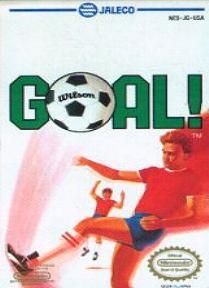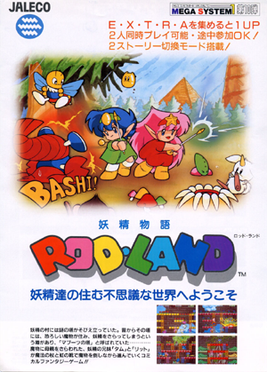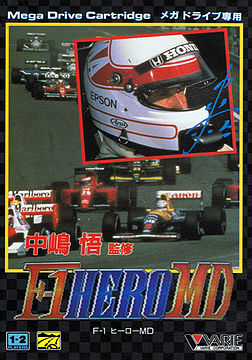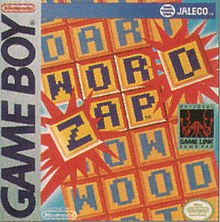
Scrabble is a word game in which two to four players score points by placing tiles, each bearing a single letter, onto a game board divided into a 15×15 grid of squares. The tiles must form words that, in crossword fashion, read left to right in rows or downward in columns and are included in a standard dictionary or lexicon.

Upwords is a board game. It was originally manufactured and marketed by the Milton Bradley Company, then a division of Hasbro. It has been marketed under its own name and also as Scrabble Upwords in the United States and Canada, and Topwords, Crucimaster, Betutorony, Palabras Arriba and Stapelwoord in other countries. It is currently available as a board game and a digital gaming app.

Rampart is a 1990 video game released by Atari Games and Midway Games that combines the shoot 'em up, strategy, and puzzle genres. It debuted as an arcade game with trackball controls, and was ported to home systems. It had a limited US release in October 1990, and a wide release in early 1991. It was distributed in Japan by Namco.

Wordtris is a Tetris offshoot designed by Sergei Utkin, Vyacheslav Tsoy and Armen Sarkissian and published by Spectrum HoloByte in 1991 for MS-DOS compatible operating systems. A port to the Game Boy, by Realtime Associates, and Super Nintendo Entertainment System were released in 1992.

Zoo Keeper is a tile-matching video game developed for the Web by Robot Communications and later ported to the Nintendo DS by Japanese video game publisher Success. Zoo Keeper was released for arcades in 2004. The game was then brought to American and European shores by Ignition Entertainment, and has since been released for iOS and Android devices under the title Zookeeper DX Touch Edition by Kiteretsu.

Goal! is a 1988 soccer/football video game published by Jaleco for the Nintendo Entertainment System. The game supports up to two players. It was released in Japan as Moero !! Pro Soccer.

Crosswords DS is a puzzle video game developed by American studio Nuevo Retro games released by Nintendo for the Nintendo DS handheld video game console. It was previously released in Australia as CrossworDS but a new OFLC entry confirmed that Nintendo Australia re-released it with a European localization. Crosswords DS features over 1,000 crossword puzzles that the player solves by using the stylus. Despite the title, it also features word search puzzles and anagram puzzles. It makes use of similar handwriting mechanics that the Brain Age titles make use of. Crosswords DS is included in the Touch! Generations series of titles, which includes such popular games as Brain Age: Train Your Brain in Minutes a Day! and Nintendogs. The background music was composed by Fabian Del Priore.
Scrabble variants are games created by changing the normal Scrabble rules or equipment.

Rod Land, known in Japan as Yōsei Monogatari Rod Land, is a 1990 platform game originally developed and published in arcades by Jaleco.

Pictionary, taglined The Game of Video Quick Draw, is a video board game developed by Software Creations and published by LJN for the Nintendo Entertainment System. It is based on the board game of the same name. Players may play in up to four teams of unlimited players.

Bookworm is a word-forming puzzle video game by PopCap Games. From a grid of available letters, players connect letters to form words. As words are formed, they are removed from the grid and the remaining letters collapse to fill the available space. Players earn more points by creating longer words or words which use less common letters and earn less for smaller words. In November 2006, PopCap Games released a sequel, Bookworm Adventures. Bookworm was released for the Nintendo DS digital distribution service DSiWare on November 30, 2009. It has also been released on the regular Nintendo DS cartridge.

Tile tracking is a technique most commonly associated with the game of Scrabble and similar word games. It refers to the practice of keeping track of letters played on the game board, typically by crossing letters off a score sheet or tracking grid as the tiles are played. Tracking tiles can be an important aid to strategy, especially during the endgame when there are no tiles left to draw, where careful tracking allows each player to deduce the remaining unseen letters on the opponent's final rack. The marking off of each letter from a pre-printed tracking grid as the tiles are played is a standard feature of tournament play.

Nakajima Satoru Kanshuu F1 Hero MD is a Formula One video game endorsed by Satoru Nakajima that was released in 1992 for the Mega Drive/Genesis, Nintendo Entertainment System, and Nintendo Game Boy. The North American and European versions of the game are known as Ferrari Grand Prix Challenge in reference to Ferrari, specifically their Formula One team.

Meldac is a Japanese music and video game company. It was founded in July 1985 by Hiromu Takamizawa, Tohru Sasaki, Tetsu Kiso, and Hajime Toyama — all members of the now-defunct vocal group Dark Ducks — with financial backing from the Mitsubishi keiretsu and its affiliates, including former Mitsubishi Electric subsidiary Nippon Crown.
Chicktionary is a word game available on the Microsoft Internet search page. Chicktionary was developed by Blockdot, a Dallas, Texas based developer of games and branded entertainment applications. The game was originally developed as "Fowl Words" but later changed after it was concluded that the play on words "fowl" would be confused with "foul" and alienate potential players.

Scrabble ME is a variation of the classic board game Scrabble, where each player plays on their own small board as it is opposed to all players playing on one main shared board. It was published by Winning Moves Games USA in 2008.
There have been a variety of Sesame Street video games released for video game platforms. Most of the Sesame Street video games were published and developed by NewKidCo.

Scrabble Showdown is an American game show created for the American cable network The Hub. The program was based on the board game Scrabble and was hosted by Justin Willman. It ran from September 3, 2011, to April 15, 2012.

Microsoft Ultimate Word Games is a word puzzle game published by Xbox Game Studios, first released for Windows Phone as 'Wordament' on April 24, 2012. The game was relaunched in June 2017 with two new game modes, Crosswords and Word Twister.

Snap Attack was the second word puzzle game developed by You vs. the Internet and published by Microsoft Studios, the first of which was Wordament. The game was initially released for the Windows Phone and Windows 8.1 operating systems on May 6, 2014 as a free download from the respective app stores. The game was also available for iOS and Android devices. The name Snap Attack was trademarked on April 3, 2014. In March 2018, it was announced that Snap Attack would be shut down as of May 18 of that year.

















